|
Réponse |
Message 1 de 157 de ce thème |
|
|
|
|
|
Réponse |
Message 143 de 157 de ce thème |
|
La semana "treinta y tres" esta en el OCTAVO GRUPO DE CUATRO SEMANAS. LA REFERENCIA ES OBVIA EN EL MARCO AL NEXO CUARTO MANDAMIENTO SEPTIMO DIA O CUATRO FASES DE SIETE DIAS.
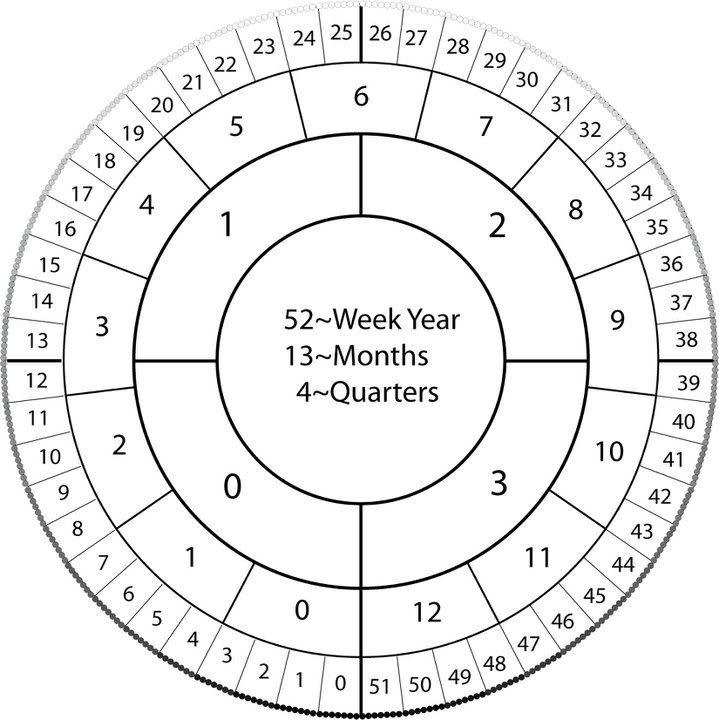 .
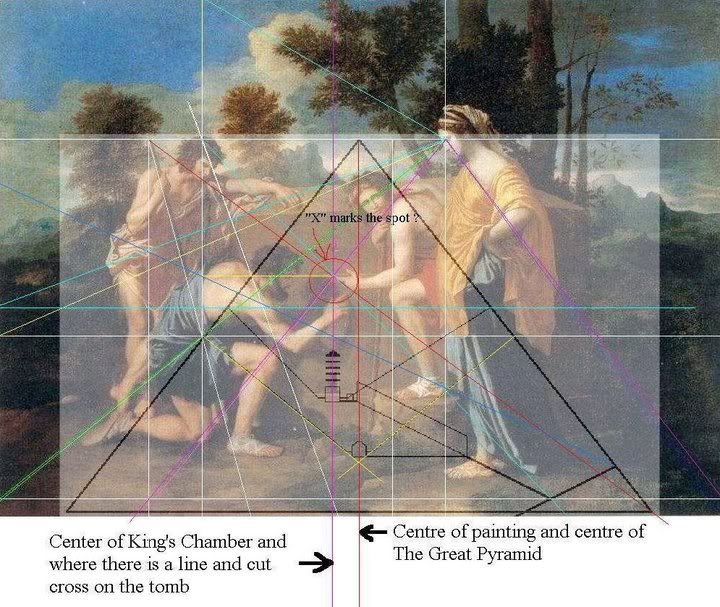
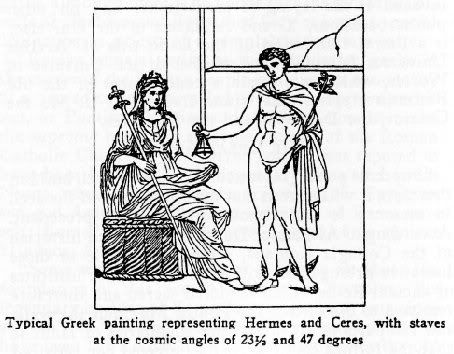
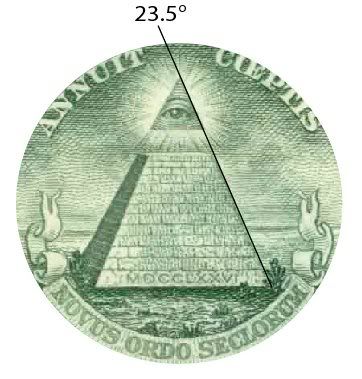 l
IMPRESIONANTE NEXO CON FATIMA EN EL CONTEXTO AL NUMERO 47
|
|
It is known to many persons who are not students of the occult that the Tarot is a method of divination by means of 78 symbolic picture cards, to which great antiquity and high importance are attributed by several expositors. And the literary history of the Tarot is also fairly well known. In ancient times the number 13 became a number of fear and superstition because the 13th card of the Tarot is the card of Death, and is pictured as a skeleton (the symbol of death) with a scythe reaping down men in a field of newly grown grass where young faces and heads appear cropping up on all sides. This image later became known as “The Grim Reaper,” and it was ascribed to the planet Saturn. In medieval England the standard fee of the hangman was 13 pence - a shilling and a penny...
But 13 is not an unfortunate number, as is generally supposed. It has become so firmly associated in the popular mind with the notion of “bad luck” that it is easy to forget the fact that in the ancient mystic religions 13 was the characteristic number of participants in many orders and occult groups, including sacred meals – a fact reflected in the size of the original Nazarene Last Supper. And it can be clearly shown that 13 is not only the most cherished number of the United States, but also the most fortunate number for Africans, African-Americans, and people the world over of African descent. We shall begin with the United States:
Starting with the 13 colonies, the first national flag had 13 stars, and even today it still has 13 stripes. On the green side of the dollar bill there are 13 steps in the pyramid of the Great Seal. The motto above the pyramid, which reads “Annuit Coeptis,” has 13 letters; the eagle on the right side has a ribbon in its beak that bears the motto “E pluribus unum,” which contains 13 letters. The eagle has 13 tail feathers, and on its breast there is a shield of 13 stripes. In one talon the eagle holds 13 arrows, and in the other an olive branch with 13 leaves and 13 berries. Over the eagle’s head are 13 stars that form the six-pointed “Star of David.”
The phrase “July the Fourth” contains 13 letters and the number 4 (1+3), the birth number of the U.S. (July 4, 1776), which leads us to the real reason why the “founding fathers” chose this date as the official birth date of the United States:
In the occult science of numerology it is said that, “He who understands the number 13 will be given power and dominion. It is a number of upheaval and destruction; a symbol of power which, if wrongly used, will wreak havoc and destruction upon itself.” Astronomically, on July 4th the longitude of the Sun is 12° Cancer in the Heavens, and on this date the Sun conjoins the great star Sirius, whose longitude is 13° Cancer. Sirius is a first-magnitude star that is 40 times brighter than the Sun, and is the star that rules all African people. It was venerated in ancient Egypt from time immemorial, and was held in great reverence by the ancient Egyptians because it rose heliacally with the Sun at dawn during the inundation of the Nile River, the lifeline of ancient Egypt.
In astrological parlance it is said: “If the great star Sirius is well-placed in a horoscope, it will contribute to the amassing of wealth and the acquisition of fame and honor.” Sirius conjuncts the Sun in the horoscope of the United States, in the 2nd house of money and material possessions. The Part of Fortune is 13° Capricorn – opposing the Sun and Sirius – in the 8th house of other people’s resources! These powerful cosmic patterns explain, astrologically, the great wealth of this country (much of which was acquired through the ignominious practice of slavery)...
Cancer is the fourth (1+3) sign of the zodiac, and it rules the continent of Africa, its inhabitants, and people the world over of African descent. The Moon rules Cancer, and is therefore the cosmic ruler of all African people. The average celestial motion of the Moon is 13° per day, and 13 weeks is the time it takes the Earth to travel from the equinoxes to the solstices. For example, it takes the Earth 13 weeks to travel from the first day of spring (March 20th) to the first day of summer (June 21st); 13 weeks from the first day of summer to the first day of fall (Sept. 23rd); 13 weeks from the first day of fall to the first day of winter (Dec. 21st); and it takes the Earth 13 weeks to travel from the first day of winter to the first day of spring...
[13x4=52, which is the time it takes (in weeks) the Earth to make one complete revolution around the Sun, and in most years lunations (i.e., conjunctions between the Sun and Moon) occur 13 times.]
The fear of the number 13 is unfounded internationally as well. It is an honored number in many countries throughout the world. There are 13 occurrences of the quantity 13 in the design of the Great Pyramid of Gizeh in Egypt, the largest stone edifice ever built. In the Indian Pantheon there are 13 Buddhas. The mystical discs that surmount Indian and Chinese pagodas are 13 in number. Enshrined in the Temple of Atsuta in Japan is a sacred sword with 13 objects of mystery forming its hilt. And 13 was the sacred number of the ancient Mexicans – they had 13 snake gods.
The 13th letter of the English alphabet is M, which finds its roots in the 13th letter of the Hebrew alphabet, “mem” (meaning mother), which was the ancient Phoenician word for water. The ancient Egyptian word for water was “moo.” M is the most sacred of all the letters, for it symbolizes water, where all life began. It is the root of the word “mother,” and relates to the evolutionary destiny of Africans, African-Americans, and all people of African descent who are ruled by the number 13:
The Chosen Caretakers of the Universe...
|
|
|
|
|
|
Réponse |
Message 144 de 157 de ce thème |
|
 Dome of the Rock The floor plan of the Dome of the Rock and some construction lines; possible source of inspiration for Templar constructions and the cross pathee
_________________
Everything is Connected and there are no
coincidences
|
|
Centered octagonal number
From Wikipedia, the free encyclopedia
A centered octagonal number is a centered figurate number that represents an octagon with a dot in the center and all other dots surrounding the center dot in successive octagonal layers.[1] The centered octagonal numbers are the same as the odd square numbers.[2] Thus, the nth centered octagonal number is given by the formula

The first few centered octagonal numbers are[2]
- 1, 9, 25, 49, 81, 121, 169, 225, 289, 361, 441, 529, 625, 729, 841, 961, 1089.
Calculating Ramanujan's tau function on a centered octagonal number yields an odd number, whereas for any other number the function yields an even number.[2]
See also[edit]
References[edit]
https://en.wikipedia.org/wiki/Centered_octagonal_number
The New Jerusalem Diagram – Introduction
“The New Jerusalem Diagram” is the name given by the scholar of ancient lore, John Michell [The original explanations in John Michell's books, especially "The Dimensions of Paradise", Thames and Hudson, 1986] to a geometrical construction that allows the “squaring of the circle” and the division of the circle to 28 equal sectors (a zodiac wheel) and the ceremonial positioning of the twelve tribes (or constellations) in a pattern of four camps at the four sides of the square.
John Michell has reconstructed the geometric pattern of the ‘heavenly city’ which is the template of the New Jerusalem of Revelation 21.

He discovered that this diagram served as the design (blueprint) for many sacred sites, including the Stonehenge, The Great Pyramid, St. Mary’s Chapel at Glastonbury and the City of Magnesia in Plato’s The Laws.

The Great Pyramid, Earth and Moon fit the New Jerusalem Diagram
It turns out that also the Nazca glyph called “Mandala” aka “Sun-Star-Cross” perfectly matches the New Jerusalem Diagram.



Superimposed image of NJ Diagram and Mandala glyph near Nazca, Peru
It is no surprise that the NJ diagram matches blueprint for the The Dome of the Rock, a shrine located on the Temple Mount in the Old City of Jerusalem.

The wheel of 28 divisions is common to various esoteric systems and serves as representation for the schematic month: 4 weeks = 28 days. The solar calendar of the Dead Sea scrolls sect was of 364 days, which is a multiple of 28 ( 28×13 = 364). In many Sufi diagrams, including in the ceiling of the dome at the El-Aqsa Mosque* (not the Dome of the Rock) at the Temple Mount, there appears the motif of the wheel made of 28 divisions.

Al-Aqsa. The resplendent ceiling of the Al-Aqsa Mosque on the Temple Mount in Jerusalem. The mosque, one of Islam’s most holy sites, sits near the Dome of the Rock and above the Marwani Mosque, aka Solomon’s Stables.
Image Source/Credit.
The NJ diagram is also hinted and enfolded (according to Micheell), in the description of the holy city, The New Jerusalem, whose descent from heaven concludes the Christian Bible.

Below we present 3-D version of the New Jerusalem Diagram.

Is it possible the 3D NJ diagram was used as a blueprint for the Crown Jewels?… Perhaps this is a case of a “secret hidden in plain site”?


The collective term Crown Jewels denotes the regalia and vestments worn by the sovereign of the United Kingdom during the coronation ceremony and at other state functions. The term refers to the following objects: the crowns, sceptres (with either the cross or the dove), orbs, swords, rings, spurs, colobium sindonis, dalmatic, armill, and the royal robe or pall, as well as several other objects connected with the ceremony itself. The Crown Jewels have a religious and sacral connotation. Their hidden symbolism seems to be related to the sacred geometry of the New Jerusalem Diagram.
The Construction of the New Jerusalem Diagram
The construction of this diagram starts with the attempt to “square the circle” by drawing a circle and a square that have the same circumference.
- So in building this sacred diagram, one starts with a circle with a diameter of 22 units, and blocks it with a square of 22 x 22 units (like the number of the Hebrew letters, with which supposedly “heaven and earth were made”).
- Then one draws from the same centre an additional circle whose diameter is 28 units – “the perfect number” that is already the number of the letters in the first verse of genesis and marks the circle of the seasons. The circle with diameter 28 has circumference of Pi x 28, which is as noted 22/7 x 28 = 88 – just the circumference of the square with edges of 22 and circumference thus 2 x 22 = 88.
The circle and the square have the same circumference, and they intersect in 8 points, where the square juts out of the circle in 4 vertices.

- The building of the complete pattern continues with the drawing of 12 circles with diameter of 6 units – the number of letters in the first word of Genesis – Bereshit – as the first “perfect number”. The centers of these twelve circles are situated on the outer big circle, whose diameter is 28, and they touch (are tangent to) the inner circle, whose diameter is 22. Four of these circles are situated according to the points were the square is tangent to the inner circle, and the other 8 circles are placed according to the 8 points of intersection between the square and the outer circle.

There are two amazing consequences of this construction:
- This construction squares the circle
- It divides the circle into 28 equal segments
- It reflects ratio 22:7 which is good approximation of the “Pi”
- It reflects golden ratio 1.618
- It reflects the ratio of 22:6, which issues theoretical-geometrical considerations is also the exact real ratio between the diameter of the earth and the diameter of the moon!

There are many more features of the NJ diagram which will be presented in our upcoming articles (e.g. amazing connection with Teotihuacan).
|
|
|
|
|
|
|
Réponse |
Message 145 de 157 de ce thème |
|
LA MISMA BIBLIA CONFIRMA LA RELACION DE VENUS CON EL SISTEMA HEXADECIMAL, EN EL CONTEXTO AL "EXPERIMENTO FILADELFIA", LA "MAQUINA DEL TIEMPO"
INCLUSO HASTA EN EL ORDEN QUE APARECE EN LA MISMA, ES EL NUMERO 279 (27/9=DIA EN QUE EINSTEIN SACO LA LEY DE LA RELATIVIDAD EN 1905), EN QUE APARECE LA BIBLIA.
VENUS ES LA CLAVE PARA ENTENDER QUE NOS QUIERE DECIR EL TODOPODEROSO DETRAS DEL "EXPERIMENTO FILADELFIA", OSEA DE LA TRASLACION EN EL TIEMPO. TODO ES UNA OBVIA REFERENCIA A VENUS E INCLUSO EN EL MISMO CONTEXTO AL 11/9 (11 DE SEPTIEMBRE) TAL COMO LO CONFIRMA LA PELICULA "VOLVER AL FUTURO" DE MICHAEL FOX. EL VERSICULO APOCALIPSIS 22:16, OSEA EN EL CONTEXTO AL NEXO CON EL 22:7=PI=3:14 (1+6=7) E INCLUSO EL VERSICULO 16 ES OBVIO QUE TIENE ESA RELACION. NO PUEDE SER TANTA LA CASUALIDAD.
277. 2 Pedro 1:19: Tenemos también la palabra profética más segura, a la cual hacéis bien en estar atentos como a una antorcha que alumbra en lugar oscuro, hasta que el día esclarezca y el lucero de la mañana salga en vuestros corazones;
279. Apocalipsis 22:16: Yo Jesús he enviado mi ángel para daros testimonio de estas cosas en las iglesias. Yo soy la raíz y el linaje de David, la estrella resplandeciente de la mañana.
BUSQUELO USTED MISMO
EL ORDEN NUMERO 279, EN QUE APARECE EL TERMINO "MAÑANA" , ES OBVIO QUE TIENE REFERENCIA AL MISMO DIA EN QUE EINSTEIN SACO LA LEY DE LA RELATIVIDAD, QUE FUE UN 27 DE SEPTIEMBRE. INCLUSO HACE POCO EL MISMO PAPA ESTUVO EN FILADELFIA EN ESE DIA. INSISTO CON ESTO. NO PUEDE SER TANTA LA CASUALIDAD. ES OBVIO EN ESTE MARCO QUE HAY UN DIOS TODOPODEROSO QUE MANEJA TODO. "DIOS NO JUEGA A LOS DADOS" DECIA EL MISMO ALBERT EINSTEIN.
www.perimeterinstitute.ca/video-library/.../13/14-psi-relativity
13/14 PSI - Relativity - Lecture 15. Friday Sep 27, 2013. Speaker(s): Neil Turok. (
Flash Presentation ... 13/14 PSI - Relativity - Lecture 14. Thursday Sep 26, 2013.
https://en.wikipedia.org/wiki/History_of_special_relativity
It culminated in the theory of special relativity proposed by Albert Einstein and ......
In elaboration of this he published a paper (received September 27, ...
www.itsokaytobesmart.com/.../cwnl-on-this-day-9271905-albert-einstein
cwnl: “ On This Day: 9/27/1905 Albert Einstein Describes Space & Time Happy ...
and space (special relativity), and a more accurate theory of gravity based on
simple ... September 27, 1905 is generally considered the birthday of the
equation ...
blog.europeana.eu/2011/09/einsteins-theory-of-relativity/
27 Sep 2011 ... Published on 27 September 1905, Einstein's article “On the Electrodynamics of
Moving Bodies” introduced the equation and laid the foundation ...
https://books.google.com.ar/books?isbn=1594547173
New Scientist 27th September, p. 34-37. [347] The Godel Brane, 2004. Phys. Rev
. D69, 064007 (with C. Tsagas) [348] Local and Global Variations of the Fine ...
blogs.britannica.com/.../e-mc2-the-unforgettable-equation-of-einsteins-miracle-year-picture-essay-of-the-day
27 Sep 2010 ... On Sept. 27, 1905, Albert Einstein's paper “Does the Inertia of a Body Depend ...
E = mc2 was a product of special relativity, which itself seemed ...
grg.uib.es/news/index.php
This is the prize for the best presented poster by a student in the LIGO-Virgo
meeting, which took place in Hannover (Germany) from September 23rd to 27th,
...
The UIB Relativity and Gravitation Group (UIB GRG) is one of the pioneering
groups in Spain in the study of gravitational waves, with a ... 27 September, 2013.
[PDF]
arXiv:1001.1044v2 [gr-qc] 27 Sep 2010. Relativistic Bose–Einstein Condensates:
a new system for analogue models of gravity. S Fagnocchi, S Finazzi, ...
|
|
|
|
Réponse |
Message 146 de 157 de ce thème |
|
Cut and paste from another thread...but the connections to Jesus and phi and Venus and our Universe is far too profound NOT to be presented as futher evidence of WHY phi and pi would be included in a bible narrative that followed the ORAL traditions.
| Azoth wrote: |
new item. venus' spin and the pattern it makes. this is from a geocentric viewpoint. to me, it seems like some kinda (torsion field) ratcheting.
but wanted to add that in vedic astrology, venus is associated with raising the asuras or demons (or dead some say). he (yes) has the samjivani mantra to call them up. the rest of the godly retinue are wary of venus due to this.
hmm....... |
Mayan tracked Venus Transit cycle...contained in the Dresden Codex
one of only 4 books to survive the Vatican's 451 Fahrenheit baptism of the New World.
Venus transit cycle and why it is important.
Please note that the numbers from CARD X of the TAROT (11, 2, 5, 8,) are all over this description of the transit cycle.
And as a side note: 243 is connected to the Riddle of the Spinx and the numbers 423.
But back to Venus and 11258.
| Quote: |
Sequences of transits occur in a pattern that repeats every 243 years, with transits occurring eight years apart followed by a gap of 121.5 years, then a gap of eight years and then another long gap of 105.5 years. The pattern repeats every 243 years because 243 sidereal orbital periods of the Earth (365.25636 days - slightly longer than the tropical year) is 88757.3 days, and 395 sidereal orbital periods of Venus (224.701 days) is 88756.9 days. Thus, after this period both Venus and Earth have returned to very nearly the same point in each of their respective orbits. This period of time corresponds to 152 synodic periods of Venus.[5]
The pattern of 105.5, 8, 121.5 and 8 years is not the only pattern that is possible within the 243-year cycle, due to the slight mismatch between the times when the Earth and Venus arrive at the point of conjunction. Prior to 1518, the pattern of transits was 8, 113.5 and 121.5 years, and the eight inter-transit gaps before the 546 CE transit were 121.5 years apart. The current pattern will continue until 2846, when it will be replaced by a pattern of 105.5, 129.5 and 8 years. Thus, the 243-year cycle is relatively stable, but the number of transits and their timing within the cycle will vary over time.[5][6]
|
| Quote: |
ALSO please note the orbit of Venus is in a phi ratio with the earth's orbit, image/explanation found here:
http://goldennumber.net/solarsys.htm
In addition, Venus orbits the Sun in 224.695 days while Earth orbits the Sun in 365.242 days, creating a ratio of 8/13 (both Fibonacci numbers) or 0.615 (roughly phi.) Thus 5 conjunctions of Earth and Venus occur every 8 orbits of the Earth around the Sun and every 13 orbits of Venus. |
>>and as far as I am concerned... phi = fibonacci
So here we have Venus associated with the big FIBonacci 1,1,2,3,5,8 again.
But I found this quite fascinating too......a reference to Mercury/Hermes/Thoth and Pi?
| Quote: |
| Mercury, on the other hand, orbits the Sun in 87.968 Earth days, creating a conjunction with the Earth every 115.88 days. Thus there are 365.24/115.88 conjunctions in a year, or 22 conjunctions in 7 years, which is very close to Pi! |
But that would be expected because MERCURY's orbit is the one that most approaches a CIRCLE and NOT an ellipse.
And the Big FIB and Humble Pi, I feel are without a doubt being concealed by the Big Bang theory that lacks any kind of reference to a BANG or SOUND.
Where is SOUND defined in modern cosmology or in String Theory?
All they yak about is LIGHT and HEAT.
The experts are SILENT on SOUND, yet COBE tells us we can interpret background radiation as LIGHT and SOUND and HEAT.
So how / where does SPIN come into the picture?
CW or CCW?
And orbits are NOT circular...they are elliptical.
Thus they must be asymmetrical in their nature.
Similar to a spiral or a helix.
So what is the big deal about the numbers 11258 or 112358?
http://breakfornews.com/forum/viewtopic.php?t=5228&highlight=
| Quote: |
The shape of the Universe itself is a dodecahedron based on Phi
New findings in 2003 based on the study of data from NASA's Wilkinson Microwave Anisotropy Probe (WMAP) on cosmic background radiation reveal that the universe is finite and shaped like a dodecahedron, a geometric shape based on pentagons, which are based on phi.
http://goldennumber.net/universe.htm |
It just gets better and better.
Next post using the 112358 code we find out WHY Pythagoras recommended his followers NOT eat BEANS.
Actually today, AUG 2, 2009, the result of investigating an intuitive hunch re: Pythagoras/beans and omega 3 oils, I came to realize that these numbers
147
258
369
are KEYS that might just hold the cure for CANCER too!


Now that would be a neat trick.
In the twilight of the Age of Pisces, the AGE of the Fish, a cure for CANCER is found...as we enter Aquarius?
namaste
_________________
KEY 528=Swastika=ancient Spherical Standing Wave Theory
“A theory is more impressive the greater is the simplicity of its premise, the more different are the kinds of things it relates and the more extended its range of applicability…”
-Albert Einstein |
|
|
|
Réponse |
Message 147 de 157 de ce thème |
|
DAN WINTER and everything GOLDEN:
Is the World as We Know it Coming to an End????
will it be an explosion or an implosion IF it was to end?

http://www.soulsofdistortion.nl/
The above text came from a website supporting a fella called Dan Winter.
Who is Dan Winter and what is his 'growing' claim to fame?
More info and a video of Dan Winter: http://www.soulsofdistortion.nl/
Dan Winter explains how the Golden Ratio (Phase Conjugate / Fractality) Causes Gravity
Now would that be a big deal?
Can we use CARD X to summarize what Dan Winter says?
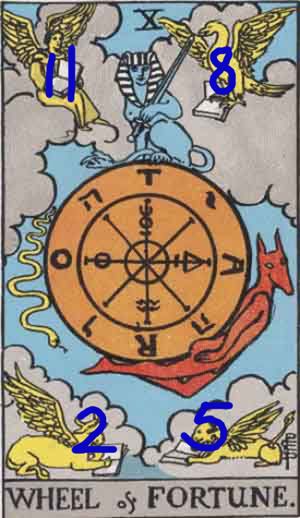
Many folks who study the tarot, feel this card is the KEY.
Is Gravity the KEY today? 
To summarize what Dan Winter is suggesting:
An understanding of the Golden Ratio is necessary to understand Gravity
To summarize what I have been trying to illustrate using this CARD, which is directly connected to those Egyptian mysteries and sacred geometry:
Golden Ratio = phi / fibonacci = 1, 1, 2, 3, 5, 8, = CARD X and the 4 Gospels/Gnostic 5th Gospel/Tetragrammaton/Plato.
And of course all the other prove I have been parking here re: CODE 11258, on this thread, here on Fintan's website.
2010 should be an interesting year. 
Once more folks understand the 'basics' it will be easier to get everybody to ride the same wavelength or frequency.
namaste
_________________
KEY 528=Swastika=ancient Spherical Standing Wave Theory
“A theory is more impressive the greater is the simplicity of its premise, the more different are the kinds of things it relates and the more extended its range of applicability…”
-Albert Einstein
http://breakfornews.com/forum/viewtopic.php?t=5228&postdays=0&postorder=asc&start=60
|
|
|
|
Réponse |
Message 148 de 157 de ce thème |
|
| Alcoseri (Original message) |
Sent: 18/11/2015 11:27 |
|
El Planeta Venus desde siempre ha despertado inquietudes entre los seres humanos, la Masonería no escapa a esta inquietud pues en los Templos de la Masonería del Rito Escocés Antiguo y Aceptado , está representado en una estatua o pintura como una Mujer Desnuda , justo al lado del torno del Segundo Vigilante- Este segundo vigilante sería para nosotros el Vigilante Interno , el Interno Yo Observante de nuestros actos. Venus está entre la órbita de la Tierra y el Sol y tiene fases como la Luna. Desde la Tierra, Venus es el objeto más brillante en el cielo después del Sol y la Luna, que aparece justo antes del amanecer, como Estrella de la Mañana, o poco después anochecer, como estrella de la tarde, los antiguos incluso pensaron que se trataba de dos estrellas diferentes, y serían en si los anunciantes de la aparición de la Luz, dándole la bienvenida y otro dándole la despedida a la Luz . Debido a su proximidad a la Tierra, a pesar de que es un planeta, su luminosidad es 13 veces más fuerte que la estrella más brillante, que es Sirius o Estrella Sirio. Su atmósfera está llena de nubes que se encargan de reflejar el 75% de la luz que proviene del sol, formando un brillante planeta visto desde la Tierra.
Durante 11 meses, Venus se llama la estrella de la tarde o de noche de la estrella, ya que establece un máximo de tres horas después del Sol y los otros 11 meses que aparece en la mayoría de aproximadamente 3 horas antes de que el Sol, como Estrella de la Mañana o Estrella de David . Cuando él está cerca de la tierra, en la conjunción inferior, en las cinco semanas antes o después de que él se encontraba en la etapa de la "nueva", que tiene su imagen en el mundo aumentó en 6 veces y parece aún más brillante. Esto sucede una vez cada ocho años y este período fue conocido en el antiguo Egipto como el ciclo Sothis.
En Mesopotamia, el planeta Venus era conocido por varios otros nombres como Asera, Ashtart, Baalat, Ishtar, Shekinah, Baalat, Inanna, Anat y Astaroth. Al aparecer en diferentes momentos (atardecer o antes del amanecer) durante mucho tiempo fue considerado como dos estrellas diferentes, que se les dio el nombre de Lucifer y Vesper (en latín, Lucifer significa "portador de luz", y fue simplemente debido a un problema en la traducción de la Biblia, que se asoció con el mal). En el siglo III A-C Pitágoras descubrió que se trataba de una sola estrella, pero fueron los romanos quienes le dieron el nombre de Venus, que es la diosa romana del amor y la belleza.
Venus se ajusta a un tiempo tan predecible en todo el tiempo que ha servido como el estándar para establecer los relojes y varios ciclos se observaron:
- Cada ocho años que regresa al mismo punto en el cielo en la conjunción inferior, aunque las estrellas en el fondo son completamente diferentes.
- Cada 40 años se realiza un círculo completo, terminando donde comenzó, en un movimiento preciso en cuestión de segundos, aparece con la misma configuración de estrella en el fondo;
- Cada 480 años, es decir, 12 ciclos de 40 años, es la conjunción de los planetas Mercurio y Venus, que, visto desde la Tierra, parecen superponerse y una sola estrella roja, extremadamente brillantes, provocando sombras en el suelo.
- Cada 1440 años, es decir, 3 ciclos de 480 años, Mercurio y Venus se superponen en el mismo lugar en el cielo, con exactamente las mismas estrellas en el fondo.
El hecho de que el patrón de Venus es tan predecible que puede ser utilizado para el ajuste del reloj, sirve para conectar este planeta para Metatron, que es un indicador de tiempo también asociado con Enoc. El primer nombre de Jerusalén era Urushalim - el prefijo uru significa "fundada por" y el sufijo o salem shalem es el nombre de dios cananeo de Venus, mientras que en su aspecto nocturno. Curiosamente, aunque el nombre de Jerusalén está dedicado a Venus en su aspecto nocturno, el Templo de Salomón se enfrentaba a la otra dirección - uno en el que Venus se comporta como la Estrella de la Mañana.- Alcoseri Leer mucho más del tema en: https://sites.google.com/site/secretomasonico/diosa-venus
|
|
|
|
|
Réponse |
Message 149 de 157 de ce thème |
|
|
| Reply |
Message 96 of 96 on the subject |
|
I C, the pillars are giving birth. /irgo's legs extend down to Libra's / Scorpio's balances were the pillars reside.
The Babylonian "Chelae Scorpionis" is Libra's balances in sidereal Scorpio!
For those wondering, yes, our astrological signs have been tampered with with as well, the degrees are way off. Eastern sidereal astrology is the truth! Is there anything they don't have there hands in?
It's the same directly opposite side of the zodiac with the bulls horns & Cap El lA, with Capella being north of the horns.
PerSeuS (Algol = negative feminine energy) is chasing CapELLA. (masculine positive energy = the lamb) 
In-Between the bulls horns & capella is were we will find our 137 axis (F#4.5) or the nuclear axis.
The light bends with the the sound !!
1 black hole in the east, 1 white hole in the west, or we can rotate the ying yang 90 degrees. 
There is a invisible white hole in Scorpio that the stinger is pointing to, it is the starting point of the west pillar.
(at 9 on the major scale) 
And that my friend is why Zuben EL chemali is the only star in the sky that is green, hydrogen green that is. 
Here is the BRANE of the operation
3 x 3 / 81 Permutations of the Lo Shu
 
 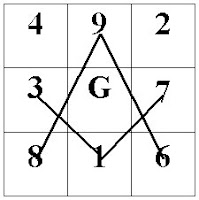 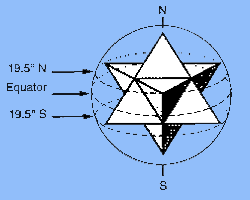
P.S.
19.47 major (related to ADAM)
25.52 minor (related to EVE)
Those are two mirror numbers or mirror partners above & below G on the musical scale. Could note A on the scale be 19.47?
 http://www.bob-wonderland.supanet.com/journal_10.htm http://www.bob-wonderland.supanet.com/journal_10.htm
Hmmmmm, Zuben EL, Algol, & Scheat are all on the 19.5 degree mark with Capella at 20. 
The 19.47 degree angle is linked geometrically to the Mercury synodic hexagram circumscribed by the Earth's orbit. 
22:7 = Mercury-Earth Synodic Cycle (22 x 116 = 2552 : 2555 = 7x 365)

_________________
TRIA SUNT MIRABILIA DEUS ET HOMO MATER ET VIRGO TRINUS ET UNUS
http://breakfornews.com/forum/viewtopic.php?t=5916&postdays=0&postorder=asc&start=144
|
| Reply |
Message 11 of 11 on the subject |
|
| Alcoseri (Original message) |
Sent: 18/11/2015 11:27 |
|
El Planeta Venus desde siempre ha despertado inquietudes entre los seres humanos, la Masonería no escapa a esta inquietud pues en los Templos de la Masonería del Rito Escocés Antiguo y Aceptado , está representado en una estatua o pintura como una Mujer Desnuda , justo al lado del torno del Segundo Vigilante- Este segundo vigilante sería para nosotros el Vigilante Interno , el Interno Yo Observante de nuestros actos. Venus está entre la órbita de la Tierra y el Sol y tiene fases como la Luna. Desde la Tierra, Venus es el objeto más brillante en el cielo después del Sol y la Luna, que aparece justo antes del amanecer, como Estrella de la Mañana, o poco después anochecer, como estrella de la tarde, los antiguos incluso pensaron que se trataba de dos estrellas diferentes, y serían en si los anunciantes de la aparición de la Luz, dándole la bienvenida y otro dándole la despedida a la Luz . Debido a su proximidad a la Tierra, a pesar de que es un planeta, su luminosidad es 13 veces más fuerte que la estrella más brillante, que es Sirius o Estrella Sirio. Su atmósfera está llena de nubes que se encargan de reflejar el 75% de la luz que proviene del sol, formando un brillante planeta visto desde la Tierra.
Durante 11 meses, Venus se llama la estrella de la tarde o de noche de la estrella, ya que establece un máximo de tres horas después del Sol y los otros 11 meses que aparece en la mayoría de aproximadamente 3 horas antes de que el Sol, como Estrella de la Mañana o Estrella de David . Cuando él está cerca de la tierra, en la conjunción inferior, en las cinco semanas antes o después de que él se encontraba en la etapa de la "nueva", que tiene su imagen en el mundo aumentó en 6 veces y parece aún más brillante. Esto sucede una vez cada ocho años y este período fue conocido en el antiguo Egipto como el ciclo Sothis.
En Mesopotamia, el planeta Venus era conocido por varios otros nombres como Asera, Ashtart, Baalat, Ishtar, Shekinah, Baalat, Inanna, Anat y Astaroth. Al aparecer en diferentes momentos (atardecer o antes del amanecer) durante mucho tiempo fue considerado como dos estrellas diferentes, que se les dio el nombre de Lucifer y Vesper (en latín, Lucifer significa "portador de luz", y fue simplemente debido a un problema en la traducción de la Biblia, que se asoció con el mal). En el siglo III A-C Pitágoras descubrió que se trataba de una sola estrella, pero fueron los romanos quienes le dieron el nombre de Venus, que es la diosa romana del amor y la belleza.
Venus se ajusta a un tiempo tan predecible en todo el tiempo que ha servido como el estándar para establecer los relojes y varios ciclos se observaron:
- Cada ocho años que regresa al mismo punto en el cielo en la conjunción inferior, aunque las estrellas en el fondo son completamente diferentes.
- Cada 40 años se realiza un círculo completo, terminando donde comenzó, en un movimiento preciso en cuestión de segundos, aparece con la misma configuración de estrella en el fondo;
- Cada 480 años, es decir, 12 ciclos de 40 años, es la conjunción de los planetas Mercurio y Venus, que, visto desde la Tierra, parecen superponerse y una sola estrella roja, extremadamente brillantes, provocando sombras en el suelo.
- Cada 1440 años, es decir, 3 ciclos de 480 años, Mercurio y Venus se superponen en el mismo lugar en el cielo, con exactamente las mismas estrellas en el fondo.
El hecho de que el patrón de Venus es tan predecible que puede ser utilizado para el ajuste del reloj, sirve para conectar este planeta para Metatron, que es un indicador de tiempo también asociado con Enoc. El primer nombre de Jerusalén era Urushalim - el prefijo uru significa "fundada por" y el sufijo o salem shalem es el nombre de dios cananeo de Venus, mientras que en su aspecto nocturno. Curiosamente, aunque el nombre de Jerusalén está dedicado a Venus en su aspecto nocturno, el Templo de Salomón se enfrentaba a la otra dirección - uno en el que Venus se comporta como la Estrella de la Mañana.- Alcoseri Leer mucho más del tema en: https://sites.google.com/site/secretomasonico/diosa-venus
|
| Reply |
Message 37 of 37 on the subject |
|
| From: Alcoseri (Original message) |
Sent: 19/11/2015 14:52 |
|
Los Secretos de la Shekinah en la Masonería
Según algunos entendidos , el fenómeno físico o manifestado de la Shekinah (estrella flamígera) se repite cada 480 años, es decir, cada 12 ciclos de Venus de 40 años, y es causada por la conjunción de los planetas Venus y Mercurio, y que, visto desde la Tierra, y parecen superponerse como una sola estrella, generando una luz extremadamente brillante y rojiza en el solsticio de invierno justo al amanecer . Este fenómeno se ha considerado siempre como una gran epifanía. Para ellos, este ciclo ha sido conocido desde los inicios de la Masonería para quienes residen en las Islas Británicas en el período neolítico, y que construyó Stonehenge (construcción con bloques de piedra de 280 toneladas, fechados en 3500 aC, donde el sol ilumina la cámara central en el solsticio de invierno y tenía una apertura o pasaje para permitir que la luz de Venus penetrara en una cámara interior, del solsticio de invierno cada 8 años.
El término Shekinah podría ser llamado sintéticamente como "la gloria de Dios se manifiesta." Significa esplendor, la gloria visible o la "Divina Presencia" y es considerada el mismo rostro femenino de Dios y la expresión maternal de la divinidad y es una transliteración de la raíz hebrea "shkn" = vivo, para habitar.
La Shekinah (" Dios hizo morarda") aparece en la literatura rabínica en alusión a la presencia divina en Israel. En la Biblia, Dios le dice a su pueblo: Éxodo
Éxodo 25:8 Reina-Valera
8 Y harán un santuario para mí, y habitaré en medio de ellos.
Éxodo 26,1: Y harás el tabernáculo de diez cortinas de lino torcido, azul, púrpura, y carmesí: y harás querubines de obra de arte.
Los Cabalistas Judíos comenzaron a utilizar esta palabra a partir del siglo XIII, con el sentido de la gloria. En la Cábala esotérica, Shekinah es la esencia de Ain Soph (el Supremo forma de Dios en la Kabbalah) que quedó atrapado en Malkuth (mundo físico), y corresponde a la Kundalini Shakti o la tradición esotérica oriental de Yoga. El sentido cabalístico plasmado en el Zohar (Libro esplendores), la evolución del hombre es un proceso en el que el polo femenino de la Divinidad (Shekinah), presente en la creación y en el hombre (físico Malkuth) se une al polo masculino de la divinidad ( Kether- en manifestaciones que tienen lugar en otras dimensiones). La Shekinah siempre se tomó como una bendición de Dios.
Extrañamente, en la Biblia muchos estudiosos muestran que el término Shekinah es una palabra hebrea que se usa para designar a la diosa mesopotámica LILITH-Inanna, es decir, una diosa de la fertilidad del misticismo judío, y por lo tanto el nombre de una "demonia cabalística ". Es una interpretación extraña que a Lilith se le asocie con la Shekina , son aspectos discutibles, pero cuya discusión llega a ser estéril en el campo religioso sea judío o cristiano , ya que tales aspectos están encubiertos en un carácter religioso dogmatico para denigrar a la Mujer y presentarla en la Biblia como un algo negativo , así los aspectos femeninos en la Biblia para los religiosos dogmáticos que no admiten un aspecto femenino de Dios y dicen que Dios no se puede presentar como un Algo femenino, pero han pasado los años y estamos en pleno siglo XXI y la Religión dogmatizada ha perdido fuerz y ya " no tienen la Verdad única." De hecho, la Shekinah y su asociación con la diosa mesopotámica Lilith se deriva del hecho de que ambos aspectos están asociados con la sabiduría y la luz del planeta Venus, pero no es razonable que el hecho de que los mesopotámicos han asociado en la antigüedad una diosa pagana al planeta Venus constituye evidencia suficiente para hoy demonizar cualquier tema relacionado a este planeta, aunque sólo sea porque está vinculada a Jesús como la Estrella de la Mañana.
La palabra Shekinah se menciona seis veces en el Corán, que representa la garantía de la paz, la calma y la tranquilidad. El Cap.2, aleya 248 dice: Su profeta les dijo: «El signo de su dominio será que el Arca volverá a vosotros, llevada por los ángeles, con sakina de vuestro Señor y reliquia de lo que dejaron las gentes de Moisés y de Aarón. Ciertamente tenéis en ello un signo, si es que sois creyentes».-
1) La Shekinah apareció cuando Dios sacó a Israel de Egipto, y protegido por una columna de nube y fuego
Éxodo 19:16Nueva Biblia Latinoamericana de Hoy (NBLH)
La Majestuosa Presencia del Señor
16 Y aconteció que al tercer día, cuando llegó la mañana, hubo truenos y relámpagos y una densa nube sobre el monte y un sonido tan fuerte de trompeta, que hizo temblar a todo el pueblo que estaba en el campamento.
2) La Shekinah se refiere a la nube que rodeaba a la gloria
Éxodo 40,34:
Entonces una nube cubrió el tabernáculo de reunión, y la gloria de Jehová llenó el tabernáculo.
Éxodo 40,38
Porque la nube de Jehová estaba de día sobre el tabernáculo, y el fuego estaba de noche en él, á vista de toda la casa de Israel, en todas sus jornadas.
3) La Shekinah reapareció con Cristo en Mateo 17,5: Mientras él aún hablaba, una nube de luz los cubrió; y he aquí una voz desde la nube, que decía: Este es mi Hijo amado, en quien tengo complacencia; a él oíd.
El profeta Isaías (Is 60: 1,3,6) escribió 60 Levántate, resplandece; porque ha venido tu luz, y la gloria de Jehová ha nacido sobre ti.
2 Porque he aquí que tinieblas cubrirán la tierra, y oscuridad las naciones; mas sobre ti amanecerá Jehová, y sobre ti será vista su gloria.
3 Y andarán las naciones a tu luz, y los reyes al resplandor de tu nacimiento.
4 Alza tus ojos alrededor y mira, todos éstos se han juntado, vinieron a ti; tus hijos vendrán de lejos, y tus hijas serán llevadas en brazos.
5 Entonces verás, y resplandecerás; se maravillará y ensanchará tu corazón, porque se haya vuelto a ti la multitud del mar, y las riquezas de las naciones hayan venido a ti.
6 Multitud de camellos te cubrirá; dromedarios de Madián y de Efa; vendrán todos los de Sabá; traerán oro e incienso, y publicarán alabanzas de Jehová.
El Profeta Isaías hablo acerca del futuro mesías, sin duda basado en la Shekinah: La importancia del profeta Isaías, los primeros cristianos trató de enmarcar a Jesús esta profecía, la incorporación de los Reyes Magos y los dones mencionados.
En el antiguo templo de Salomón , no había necesidad de que la luz de la Shekinah penetrara en el tabernáculo o Sanctasanctórum y, por esto, se orientó hacia el oriente, con el fin de que algún día se pudiera permitir el acceso de la Shekinah a la cámara de en medio , iluminado con una gran luz, y eclipsando todo lo profano allí.
Según la tradición esotérica en relación ,al "sello" de Salomón que se creó con la figura de una estrella (estrella de seis puntas) y que en realidad consiste en un pie de pirámide y una pirámide invertida, derivado de los ángulos creados por las sombras al amanecer y al atardecer en los dos solsticios en Jerusalén para formar un símbolo de la Shekinah.
En Escocia en la Edad Media, la familia Sinclair (que significa: la luz brillante y sagrada)
El apellido Sinclair tiene orígen normando y procede de la localidad francesa de Saint-Clair-sur-Elle, estableciéndose la familia en Escocia en 1162 (siglo XII), cuando Henry de Saint-Clair de Roslin (o Rosslyn) obtuvo tierras y feudos en Lothian.
En 1455, William Sinclair, 3er Conde de Orkney, recibió de la corona escocesa el condado de Caithness y fundó anteriormente la tan famosa Capilla de Rosslyn en 1446. En 1470, el conde de Orkney y de Caithness fue obligado a ceder el condado de Orkney al rey Jacobo I, a cambio del castillo de Ravenscraig en Fife. El por qué del intercambio en el cual perdía el conde, venía de los tremendos celos que sentía hacia él el rey, por poseer y gobernar casi como un monarca el condado de Orkney, que los Sinclair habían heredado de los reyes del Mar del Norte.
Sinclair proviene desde las leyendas merovingias cuando María Magdalena se vio obligada a huir por toda Europa ya que quedo embarazada de Jesús y los católicos extremistas y radicales con sectas ocultas deseaban asesinar la desdecía directa de Jesús.
La Shekinah tiene asociaciones claras a eventos como : la construcción de Rosslyn que comenzó en 1440 después del nacimiento de Jesús (es decir, después de tres ciclos de Shekinah); Jesús nació 1440 años después de Moisés y su Éxodo;y el Templo de Salomón comenzó 1440 años después del Diluvio. El Templo de Zorobabel comenzó 480 años después de que el Templo de Salomón (un ciclo de la Shekinah) y 1440 años después de Abraham (entonces 75 años de edad) hasta llegar a Canaan. Por otra parte, Enoc (3382 AC) que precede en Abraham acerca de tres ciclos de la Shekinah. Como se puede ver, todos estos eventos ocurrieron en los tiempos de ocurrencia del fenómeno Shekinah (o lo que la historia fue cambiado a colocarlos en esas fechas, lo que indicaría también la intención de iniciar la construcción de Rosslyn exactamente ese año ).
Así las normas para la reapariciones Shekinahs y por lo tanto no es sorprendente que el Antiguo Testamento refleja una visión cíclica de la historia judía, con un estándar compatible con el ciclo de Shekinah. Implícita en esta es la visión que Dios decreta las leyes que rigen la naturaleza que puede ser descubiertas por los masones a través de las señales proporcionadas.
Curiosamente, el término de búsqueda "480 años" en Google trae 126.000 resultados, que muestran que este ciclo es bien reconocido, pero menos de 0,5% de ellos asociado con la aparición de la Shekinah. Por otra parte, la búsqueda de "Shekinah" resultados de Google trae 3,8 millones, menos del 0,02% del ciclo asociado con la aparición de"480 años", lo que demuestra que la Shekinah y el ciclo bíblico de 480 años son conceptos bien conocidos, pero la asociación explicadas por la masonería del fenómeno Shekinah con el ciclo bíblico de 480 años, aún está lejos de conocimiento profano común.
En efecto, con la construcción de la Capilla Rosslyn, se inició el ciclo de la Shekinah, y era una copia del Templo de Salomón y debe haber sido construido para hacer la voluntad de Dios en la tierra. Muchos masones están convencidos de que en Rosslyn tiene un sótano oculto y en él se esconden los supuestos pergaminos encontrados por los templarios en el Templo de Salomón, pergaminos con importantes y profundas verdades, que aún no son conocidos por todos.
Además, muchos rechazan que la masonería fue originado los gremios de los albañiles, creyendo que era durante la construcción de Rosslyn que se construyeron los cimientos de la masonería, se encontraron con fuertes conexiones con diversos grados de la masonería moderna. Si Observamos la Capilla Rosslyn desde una nueva perspectiva es un Libro de Piedra en si , y debe ser considerada un templo con mensajes encriptados , no debe sorprendernos el simbolismo masónico dentro de esta capilla de Rosslyn. - Alcoseri
|
|
|
|
|
|
|
|
|
|
|
Réponse |
Message 150 de 157 de ce thème |
|

Para los mapuches Venus era y es Guñelve, la blanca estrella solitaria de ocho puntas, y en el kultrún aparece dibujada en lados opuestos, para explicar su presencia tanto como “estrella de la mañana” y como “estrella de la tarde”. Al igual que los mayas, los mapuches conocían tan bien el desplazamiento de Venus en el firmamento, hasta el punto de calcular con bastante exactitud su “período sinódico” el cual se completa en cerca de 583 días. Solían dibujarlo como una estrella de ocho puntas y su símil terrestre era y es la blanca flor del foye (canelo).Para los mapuches Venus era y es Guñelve, la blanca estrella solitaria de ocho puntas, y en el kultrún aparece dibujada en lados opuestos, para explicar su presencia tanto como “estrella de la mañana” y como “estrella de la tarde”. Al igual que los mayas, los mapuches conocían tan bien el desplazamiento de Venus en el firmamento, hasta el punto de calcular con bastante exactitud su “período sinódico” el cual se completa en cerca de 583 días. Solían dibujarlo como una estrella de ocho puntas y su símil terrestre era y es la blanca flor del foye (canelo).
http://sabijabi-blog.tumblr.com/
|
|
|
|
|
Réponse |
Message 151 de 157 de ce thème |
|
Marco Vitruvio
Marco Vitruvio Polión (en latín Marcus Vitruvius Pollio; c. 80-70 a. C.-15 a. C.) fue unarquitecto, escritor, ingeniero y tratadista romano del siglo I a. C.
Biografía y obra[editar]
Fue arquitecto de Julio César durante su juventud, y al retirarse del servicio entró en la arquitectura civil, siendo de este periodo su única obra conocida, la basílica de Fanum (en Italia). Es el autor del tratado sobre arquitectura más antiguo que se conserva y el único de la Antigüedad clásica, De Architectura, en 10 libros (probablemente escrito entre los años 27 a. C. y 23 a. C.). Inspirada en teóricos helenísticos –se refiere expresamente a inventos del gran Ctesibio–, la obra trata sobre órdenes, materiales, técnicas decorativas, construcción, tipos de edificios,hidráulica, colores, mecánica y gnomónica (Libro IX).
El último libro está dedicado a las máquinas: de tracción, elevadoras de agua y todo tipo de artefactos bélicos (catapultas, ballestas, tortugas, etc.). Vitruvio describió muy bien la rueda hidráulica en el cap. X.5. La rueda de Vitruvio era vertical y el agua la empujaba por abajo; unosengranajes tenían la finalidad de cambiar la dirección del giro y aumentar la velocidad de las muelas; se calcula que con la energía producida por una de estas ruedas se podían moler 150 kg de trigo por hora, mientras que dos esclavos solo molían 7 kg.1
De Architectura, conocido y empleado en la Edad Media, se imprimió por primera vez en Roma en1486, edición del humanista y gramático Fray Giovanni Sulpicio de Veroli, ofreciendo al artista delRenacimiento, imbuido de la admiración por las virtudes de la cultura clásica tan propio de la época, un canal privilegiado mediante el que reproducir las formas arquitectónicas de la antigüedad greco-latina. Posteriormente, se publicó en la mayor parte de los países y todavía hoy constituye una fuente documental insustituible, también por las informaciones que aporta sobre la pintura y la esculturagriegas y romanas.2 El famoso dibujo de Leonardo da Vinci, el Hombre de Vitruvio, sobre las proporciones del hombre está basado en las indicaciones dadas en esta obra. El dibujo se conserva ahora en la Galleria dell'Accademia, en Venecia. El gran redescubridor de Vitruvio fue Petrarca, y tras la difusión por el florentino de la obra de este autor clásico, se puede afirmar que Vitruvio sentó las bases de la arquitectura Renacentista.3
Las imágenes que ilustran la obra de Vitruvio, en sus ediciones hasta el siglo XVIII, no solo aclaran y embellecen el tratado grecorromano, sino que son expresión de distintas intenciones y usos que ese libro ha tenido en la modernidad europea.
De Architectura libri decem (De architectura) de Vitruvio[editar]

Plano de una casa griega según Vitruvio
Vitruvio es el autor de De architectura, conocido hoy como Los Diez Libros de Arquitectura,4 un tratado escrito en latín y griego antiguo acerca de arquitectura, dedicado al emperador Augusto. En el prefacio del libro I, Vitruvio dedica sus escritos para dar conocimiento personal de la calidad de los edificios al emperador. Probablemente Vitruvio se refiere a la campaña de reparaciones y mejoras públicas de Marco Agripa. Este trabajo es un gran libro y único superviviente de la arquitectura de la antigüedad clásica. Según Petri Liukkonen, este texto "influyó profundamente a los artistas desde el primer Renacimiento en adelante, como a pensadores y arquitectos, entre ellos Leon Battista Alberti (1404-1472), Leonardo da Vinci (1452-1519) y Miguel Ángel (1475-1564)."5 El siguiente libro importante en la arquitectura fue la reformulación de los diez libros de Alberti, que no fue escrito hasta 1452.
Vitruvio es famoso por afirmar en su libro De Architectura que ciertos edificios públicos deben exhibir las tres cualidades de firmitas, utilitas, venustas –es decir, deben ser sólidos, útiles, hermosos–. Estas cualidades a veces se llaman las virtudes de Vitruvio o la Tríada de Vitruvio. Desde el siglo XVII, esta Tríada se usa para describir la arquitectura en general, aunque la descripción vitruviana de la disciplina es muy diferente.
Según Vitruvio, la arquitectura es una imitación de la naturaleza. Como las aves y las abejas construyen sus nidos, los seres humanos construyen vivienda a partir de materiales naturales, que les da refugio contra los elementos. Para el perfeccionamiento de este arte de la construcción, los griegos inventaron los órdenes arquitectónicos: dórico, jónico y corintio. Se les dio un sentido de la proporción, que culminó en la comprensión de las proporciones de la mayor obra de arte: el cuerpo humano. Esto llevó Vitruvio a la definición de un canon del cuerpo humano, el Hombre de Vitruvio, adoptado más tarde por Leonardo da Vinci: el cuerpo humano inscrito en el círculo y el cuadrado (los patrones geométricos fundamentales del orden cósmico).
A Vitruvio se le considera a veces libremente como el primer arquitecto, pero es más exacto describirlo como el primer arquitecto romano que escribió registros de su campo que sobrevivieron. Él mismo cita a obras mayores, pero menos completas. Era al menos un pensador original o tenía el intelecto creativo de un codificador de la práctica arquitectónica existente. También hay que señalar que Vitruvio tenía un alcance mucho más amplio que los arquitectos modernos. Los arquitectos romanos practicaban una amplia variedad de disciplinas; en términos modernos, podrían describirse como la combinación de ingenieros, arquitectos, arquitectos paisajistas, artistas y artesanos. Etimológicamente la palabra arquitecto deriva de las palabras griegas que significan "maestro" y "constructor". El primero de los diez libros se ocupa de muchos temas que ahora entran en el ámbito de la arquitectura del paisaje.
Tecnología romana[editar]
Los Libros VIII, IX y X son la base de gran parte de lo que sabemos acerca de la tecnología romana, ahora aumentados por los estudios arqueológicos de los restos existentes, tales como los molinos de agua en Barbegal, Francia. La otra fuente importante de información es la Historia Naturalis compilada por Plinio el Viejo mucho más tarde en el año 75 de nuestra era.
El trabajo es importante por describir las diferentes máquinas utilizadas para estructuras de ingeniería, tales como montacargas, grúas y poleas, también máquinas de guerra, como catapultas, ballestas y máquinas de asedio. Como ingeniero practicante, Vitruvio debe estar hablando de la experiencia personal en lugar de la simple descripción de las obras de los demás. Asimismo se describe la construcción de relojes de sol y de agua, y el uso de un eolípila (la primera máquina de vapor ) como un experimento para demostrar la naturaleza de los movimientos de aire atmosféricas (viento).
Su descripción de la construcción de un acueducto incluye la forma en que se registran y la cuidadosa elección de los materiales necesarios, aunque Frontino (un general que fue nombrado a fines del Siglo Ipara administrar los numerosos acueductos de Roma) los describiría un siglo más tarde, con mucho más detalle acerca de los problemas prácticos involucrados en la construcción y el mantenimiento. Seguramente el libro de Vitruvio habría sido de gran ayuda en esto. Vitruvio escribió esto en el siglo I a. C., cuando muchos de los mejores acueductos romanos fueron construidos, y que sobreviven hasta nuestros días, como los de Segovia o Pont du Gard. El uso del sifón invertido se describe en detalle, junto con los problemas de altas presiones desarrolladas en la base del tubo del sifón, un problema práctico con el que parece estar familiarizado.
Vitruvio describe muchos diferentes materiales de construcción usados para una amplia variedad de diferentes estructuras, así como detalles tales como pintura estuco. El concreto y la cal reciben profundas descripciones, la longevidad de muchas estructuras romanas que son mudo testimonio de la habilidad de los romanos en los materiales de construcción y diseño.
Vitruvio es muy conocido y citado a menudo como una de las fuentes más antiguas que sobreviven por haber advertido que el plomo no se debe utilizar para conducir el agua potable, recomendando en cambio pipas de arcilla o canales de mampostería. Se llega a esta conclusión en el Libro VIII De Architectura después de la observación empírica de las aparentes enfermedades de los obreros en las fundiciones de plomo de su tiempo.6
Vitruvio fue el que nos relató la famosa historia de Arquímedes y su detección de oro adulterado en una corona real. Cuando Arquímedes se dio cuenta de que el volumen de la corona podría medirse exactamente por el desplazamiento creado en un baño de agua, corrió a la calle con el grito de ¡Eureka!, y el descubrimiento le permitió comparar la densidad de la corona de oro puro. Demostró que el oro de la corona había sido aleado con plata, y el rey había sido defraudado.
Máquinas de desagüe[editar]

Diseño para un tornillo de agua de Arquímedes
Describe la construcción del tornillo de Arquímedes en el Capítulo X (sin mencionar a Arquímedes por su nombre). Era un dispositivo ampliamente utilizado para la elevación de agua para el riego de los campos y desaguar las minas. Otras máquinas de elevación hídrica que menciona son la interminable cadena de cubos y la rueda reversa de drenaje. Estos restos de ruedas de agua empleadas para la elevación de agua fueron descubiertos cuando las antiguas minas fueron reabiertas en río Tinto enEspaña, Rosia Montana en Rumania y Dolaucothi en el oeste de Gales. La rueda de río Tinto se muestra ahora en el Museo Británico, y el espécimen Dolaucothi en el Museo Nacional de Gales.
Instrumentos de topografía[editar]
Vitruvio debe haber sido ducho en el arte del levantamiento topográfico, y esto se demuestra por sus descripciones de instrumentos topográficos, especialmente el nivel de agua o chorobates, que compara favorablemente con el groma, un dispositivo mediante plomadas. Eran esenciales en todas las operaciones de construcción, pero sobre todo en la construcción de acueductos, donde un degradado uniforme era importante para la provisión de un suministro regular de agua sin dañar las paredes del canal. También desarrolló uno de los primerosodómetros, que consta de una rueda de circunferencia conocida que dejaba caer una piedra en un recipiente en cada rotación.
Calefacción central[editar]

Ruinas del hipocausto bajo el piso de una villa romana. La parte debajo de la exedra está cubierto.
Describe muchas innovaciones introducidas en el diseño de edificios para mejorar las condiciones de vida de los habitantes. La más importante de ellas es el desarrollo del hipocausto, un tipo de calefacción central, donde el aire calentado por un fuego era canalizado bajo el suelo y en el interior de las paredes de los baños públicos y villas. Da instrucciones explícitas de cómo diseñar estos edificios para maximizar la eficiencia del combustible, como por ejemplo, el caldarium debe estar al lado deltepidarium seguido del frigidarium. También aconseja sobre el uso de un tipo de regulador para controlar el calor en las habitaciones calientes, un disco de bronce fijado en el techo por debajo de una abertura circular que podría ser elevada o bajada por una polea para ajustar la ventilación. A pesar de que no lo sugiere, es probable que sus dispositivos de desagüe, como la rueda hidráulica de paso inverso, se utilizaran en los baños más grandes para elevar el agua a los tanques de cabecera en la parte superior de las grandes termas, como las Termas de Diocleciano y las de Caracalla.
Redescubrimiento[editar]

El interior del Panteón (de una pintura del siglo XVIII por Panini. Aunque fue construido después de la muerte de Vitruvio, su excelente estado de conservación hace que sea de gran importancia para los interesados en la arquitectura de Vitruvio).
- Un pequeño cráter lunar lleva el nombre de Vitruvio y también una montaña lunar alargada, el Mons Vitruvio. Este cráter se encuentra cerca del valle que sirvió como el lugar de aterrizaje de la misión Apolo 17.
- El Indicador de Calidad de Diseño (ICD) es un conjunto de herramientas para medir, evaluar y mejorar la calidad del diseño de los edificios. Utiliza principios de Vitruvio.
- El asistente (voz de Morgan Freeman), líder de los Maestros Constructores en The Lego Movie, se llama Vitruvio.
https://es.wikipedia.org/wiki/Marco_Vitruvio
|
|
|
|
Réponse |
Message 152 de 157 de ce thème |
|
|
|
|
Réponse |
Message 153 de 157 de ce thème |
|
|
|
|
Réponse |
Message 154 de 157 de ce thème |
|
| rom: Cajeli (Original message) |
Sent: 03/09/2017 20:30 |
|
LA TORRE DE MAGDALA
De María Magdalena se cree que su nombre indica que ella pertenecía a la ciudad de Magdala, del hebreo migdál que significa “ciudad de las torres”, la cual ha querido ser asociada con un puerto pesquero, aledaño a una región donde proliferaban los burdeles.
Su fama de prostituta se origina cuando la iglesia católica la quiso identificar con la mujer pecadora que ungió con perfumes a Jesús, en la casa de Simón el fariseo; sin embargo el pasaje de Lucas 7.36-50 donde se registra este hecho, no da el nombre de la mujer a quien Jesús le perdona sus pecados, ni mencionan los 7 demonios de los que Jesús libró a la Magdalena.
Aunque en el Evangelio no se dice que ella fuera viuda o casada, tampoco se dice que fuera soltera, o una prostituta. Estuvo relacionada con mujeres importantes como la esposa del intendente de Herodes, y ayudó a financiar con sus bienes el ministerio de Jesús. Teniendo en cuenta que migdal significa torre, el nombre de María Magdalena la muestra como mujer vigilante, como una atalaya.
Precisamente esta mujer permaneció atenta a todos los acontecimientos durante el ministerio de Jesús; estuvo presente “mirando de lejos” la crucifixión del Señor, junto con el grupo de mujeres que lideraba; fue ella quien vio el lugar donde Jesús era puesto luego de morir. También fue quien vio quitada la piedra del sepulcro el primer día de la semana; y fue quien primero vio a Jesús resucitado, y salió apresurada para anunciar las Buenas Nuevas.
Con su don especial de permanecer atenta, se asemeja a las cinco vírgenes sensatas que manutuvieron aprovisionadas sus lámparas hasta la llegada del Novio. La bendigo, y reconozco que la iglesia de Jesucristo necesita Atalayas como esta mujer, la cual representa a la iglesia fiel y vigilante que será la esposa del Cordero

|
 First First  Previous 2 to 12 of 12 Next Previous 2 to 12 of 12 Next  Last Last  |
| Reply |
Message 2 of 12 on the subject |
|
| From: Rolmen |
Sent: 03/09/2017 22:32 |
|
Muy bonito cuento, ¿Quién es el autor? Quizá Wilde, o tal vez Andersen, o Dumas? O sería el judío Raigorodsky? Qué sé yo, pero el cuento es fascinante, sobretodo, en la parte narrativa en la cual especifica que estuvo, María Magdalena, presente en muchos acontecimientos y me pregunto, de que viviría esa mujer que tenía espacio de tiempo para estar de fisgona, de verdad que se las inventan para tener entretenidos a los lectores creyentes de fábulas y la iglesia católica no pierde tiempo, la declara santa para seguir agregando adeptos y claro, digo esto esperando no ofender a nadie.
|
|
|
| Reply |
Message 3 of 12 on the subject |
|
| From: Cajeli |
Sent: 03/09/2017 22:43 |
|
La historia en realidad es algo más profunda.
María Magdalena era una mujer muy joven que cuidaban sus padres sabiendo que estaba endemoniada.
Sufría de neurosis y epilepsia, de esa manera se reflejaba su enfermedad espiritual, y por esto fue sanada por Jesús. No hay bases para afirmar que era prostituta, eso fue una enseñanza falsa, o mal entendido desde que en un sermón al Papa Gregorio I se le ocurrió decir que fue la mujer pecadora que ungió a Jesús con perfumes
|
|
|
| Reply |
Message 4 of 12 on the subject |
|
| From: Rolmen |
Sent: 04/09/2017 00:26 |
|
Bueno Cajeli, real o no, es irrelevante, pero si, creo es una fantasía, es como tú mismo afirmas que el tal Gregorio I se le ocurrió que dicho personaje era una trabajadora sexual, bien pudo este sujeto u otro crear o tergiversar historias que luego, repetidas una y mil veces, con el tiempo se dan como verídicas, hay quienes afirman que esta mujer fue amante de Jesús Cristo e incluso tuvo vástagos de esa relación y no lo afirmo yo, sino está en boca de mucha gente y por ello te digo que las historias están trabucadas.
|
|
|
Esta es otra región de Marte, Cydonia Mensae a 33ºN y 13ºW
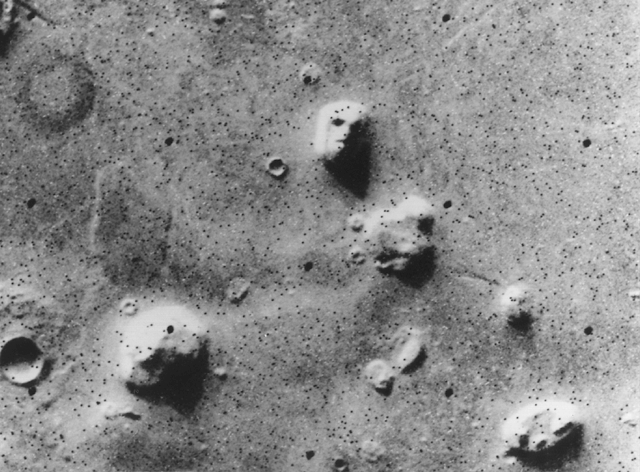
sidon esta en el paralelo 33
CYDONIA EN MARTE Y EL 33
| Reply |
Message 5 of 12 on the subject |
|
| From: Cajeli |
Sent: 04/09/2017 00:32 |
|
Este pasaje puede relacionarse con María Magdalena...
MATEO
15:21 Saliendo Jesús de allí, se FUE A LA REGIÓN DE TIRO Y SIDÓN.
15:22 Y he aquí una mujer cananea que había salido de aquella región clamaba, diciéndole: ¡Señor, Hijo de David, ten misericordia de mí! Mi hija es gravemente atormentada por un demonio.
15:23 Pero Jesús no le respondió palabra. Entonces acercándose sus discípulos, le rogaron, diciendo: Despídela, pues da voces tras nosotros.
15:24 El respondiendo, dijo: No soy enviado sino a las ovejas perdidas de la casa de Israel.
15:25 Entonces ella vino y se postró ante él, diciendo: ¡Señor, socórreme!
15:26 Respondiendo él, dijo: No está bien tomar el pan de los hijos, y echarlo a los perrillos.
15:27 Y ella dijo: Sí, Señor; pero aun los perrillos comen de las migajas que caen de la mesa de sus amos.
15:28 Entonces respondiendo Jesús, dijo: Oh mujer, grande es tu fe; hágase contigo como quieres. Y su hija fue sanada desde aquella hora.
15:29 Pasó Jesús de allí y vino junto al mar de Galilea; y subiendo al monte, se sentó allí.
15:30 Y se le acercó mucha gente que traía consigo a cojos, ciegos, mudos, mancos, y otros muchos enfermos; y los pusieron a los pies de Jesús, y los sanó;
15:31 de manera que la multitud se maravillaba, viendo a los mudos hablar, a los mancos sanados, a los cojos andar, y a los ciegos ver; y glorificaban al Dios de Israel.
15:32 Y Jesús, llamando a sus discípulos, dijo: Tengo compasión de la gente, porque ya hace tres días que están conmigo, y no tienen qué comer; y enviarlos en ayunas no quiero, no sea que desmayen en el camino.
15:33 Entonces sus discípulos le dijeron: ¿De dónde tenemos nosotros tantos panes en el desierto, para saciar a una multitud tan grande?
15:34 Jesús les dijo: ¿Cuántos panes tenéis? Y ellos dijeron: Siete, y unos pocos pececillos.
15:35 Y mandó a la multitud que se recostase en tierra.
15:36 Y tomando los siete panes y los peces, dio gracias, los partió y dio a sus discípulos, y los discípulos a la multitud.
15:37 Y comieron todos, y se saciaron; y recogieron lo que sobró de los pedazos, siete canastas llenas.
15:38 Y eran los que habían comido, cuatro mil hombres, sin contar las mujeres y los niños.
15:39 Entonces, despedida la gente, entró en la barca, y vino a la región de Magdala.
SIRIO ES LA CONSTELACION DEL PERRO/ CAN MAYOR
NOTEN EL NEXO DE DAN, CON LA SERPIENTE (VENECIA) Y EL CABALLO (PLAZA SAN MARCOS)
7. Génesis 49:17 Será Dan SERPIENTE junto al camino, Víbora junto a la senda, Que muerde los talones del caballo, Y hace caer hacia atrás al jinete.
VENECIA=PLAZA SAN MARCOS
11. Proverbios 25:11 MANZANA de oro con figuras de plata Es la palabra dicha como conviene.
12. Cantares 2:5 Sustentadme con pasas, confortadme con MANZANAs; Porque estoy enferma de amor.
13. Cantares 7:8 Yo dije: Subiré a la palmera, Asiré sus ramas. Deja que tus pechos sean como racimos de vid, Y el olor de tu boca como de MANZANAs,
ALLI ESTA LA CONEXION VENUS / VENECIA CON EL 666
VENUS= PENTAGONO= VENECIA= NUMERO DE ORO= 1.618033
LAS MATEMATICAS SON EXACTAS.
GLORIA A DIOS TODOPODEROSO. QUE BELLAS SON LAS MATEMATICAS
|
|
|
|
|
|
Réponse |
Message 155 de 157 de ce thème |
|
|
|
|
Réponse |
Message 156 de 157 de ce thème |
|
Ritual de Tránsito 2012
Venus, Enterprise y la Puerta del Dragón
Por Goro
(goroadachi.com y supertorchritual.com)
25 de mayo de 2012

Del 4 al 6 de junio de 2012 , probablemente veremos al miembro más antiguo de la flota de transbordadores espaciales, el Enterprise , siendo remolcado río Hudson hasta su lugar de descanso final, el Museo Intrepid del Mar, el Aire y el Espacio, en el West Side de Manhattan . [Actualización: Fechas cambiadas al 3-6 de junio ]. La mayoría lo desconoce por completo, pero será un reflejo terrestre del Tránsito de Venus que tendrá lugar simultáneamente en el cielo los días 5 y 6 de junio. Todo cuidadosamente organizado para crear un ejemplo exquisito de "como es arriba, es abajo"...


Cuando esto ocurra, el Enterprise entrará en el río Hudson por su desembocadura en el extremo sur de Manhattan, donde podremos visualizar una "puerta" flanqueada por la Estatua de la Libertad y el World Trade Center , donde antiguamente se alzaban las Torres Gemelas . La disposición refleja nítidamente la puerta celestial alrededor del Anticentro Galáctico , flanqueada por las constelaciones de Orión y Géminis . La Vía Láctea es un río (celestial) como el Hudson ; Orión es un " portador de antorcha " (el Sol del solsticio de verano = antorcha de Orión) como la Estatua de la Libertad ; y Géminis son los " Gemelos ", como las Torres Gemelas .
El Sol arriba, la Enterprise abajo. A través de una puerta galáctica arriba, a través de una puerta Hudson abajo. Es un espejo que une el cielo y la tierra.

Para retroceder un poco en el tiempo, el "ritual" comenzó el 27 de abril cuando Enterprise voló hacia la Gran Manzana montado sobre un Boeing 747 precisamente cuando Venus alcanzó su " mayor brillo " como Estrella Vespertina. La coincidencia implicaba una conciencia subyacente del próximo Tránsito de Venus, que será el momento de menor brillo cuando Venus se convierta en un punto negro en la cara del Sol (5 y 6 de junio) sin luz solar reflejada hacia la Tierra.

Como muestra el gráfico, Venus se está atenuando cada vez más, lo que continuará hasta principios de junio. Tras el tránsito, Venus renacerá como el
ACTUALIZACIÓN 27 de mayo: El pico en el otro lado, a mediados de julio, coincidirá aproximadamente con el debut del Enterprise en el museo Intrepid como exhibición oficial, completando su correlación con la línea de tiempo de Venus:
----- fin de actualización -----
Como saben los lectores habituales, cuando hablamos de Venus, y en particular de la Estrella de la Mañana, también nos referimos automáticamente al Príncipe Guillermo y/o a la trinidad William-Kate-bebé. Ambos van de la mano, profundamente entrelazados, como ya se ha explicado en numerosas ocasiones. Por lo tanto, no sorprende que la cronología más reciente de Venus coincida perfectamente con la de la Familia Real Británica: el 29 de abril (máximo brillo de Venus) marcó el primer aniversario de la Boda Real; del 3 al 7 de junio (tránsito de Venus/Enterprise) se celebra el cumpleaños oficial de la Reina (4 de junio) y el Jubileo de Diamante ( 4-7, 3-5 de junio); el solsticio de verano (antorcha de Orión) coincide con el cumpleaños del Príncipe Guillermo; y a finales de julio (bajo una Estrella de la Mañana/portadora de luz muy brillante), la Antorcha Olímpica llega a Londres para los Juegos Olímpicos de 2012.
En términos de la órbita de la Tierra alrededor del Sol, el 27 de abril (la llegada del Enterprise a la Gran Manzana ) fue una ventana con el ápice de un pentagrama (núcleo de la manzana)...

  

El pentagrama es una firma geométrica de Venus, lo que tiene mucho sentido en el contexto actual.
Y la manzana tiene el efecto adicional de recordar a la Familia Real Británica a través del Rey Arturo , cuyo Santo Grial ( San Greal ) o "Sangre Real" ( Sang Real ) es de vital importancia para la realeza en Gran Bretaña. El linaje jacobita del Príncipe Guillermo y su futuro hijo tiene mucho que ver con el tema subyacente de este período, es decir, el "Regreso/Renacimiento del Rey Arturo", intercambiable con la "Resurrección de Lucifer/Fénix" , etc. (Consulte mi artículo " El Destino de Lucifer " para más información sobre el tema). Si el Rey Arturo ha de "regresar", sería desde Ávalon , donde se cree que el antiguo y futuro Rey hiberna. Resulta que el nombre "Ávalon" significa " manzana ".
|
|
|
|
Réponse |
Message 157 de 157 de ce thème |
|
...paying respects to 'Lucifer' - a name originally referring to Venus the Morning Star traditionally symbolized by the pentagram often associated with the Baphomet (inverted pentagram) or a mysterious Templar 'head' sometimes identified with the Turin Shroud.
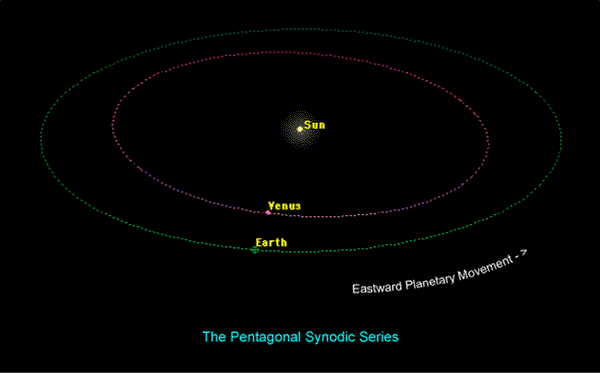
https://www.goroadachi.com/etemenanki/lu
Contact via Earthquakes
Pentagonal Stargate Activation 2010
February 27, 2010
by Goro (supertorchritual.com & goroadachi.com)



Enki works in mysterious ways. He sees the angles. He sees the alignments. He understands space. He understands time. It's '2010' and he comes in peace. Contact via earthquakes... This is it. This is how it begins...
Haiti - Chile Alignment...

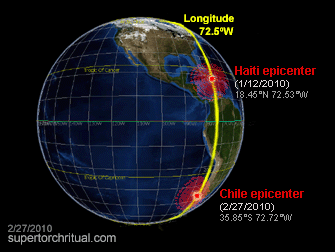

Behold, the Earth-Shaker opens the Pentagonal Stargate...


The pentagram is the symbol of Venus. Venus is the goddess/planet of love. Love in many languages is amor. Amor is the reverse of Roma. As they say, all roads lead to Rome. Even the pentagram. The Pentagonal Contact Sequence started back on April 6, 2009 near Rome...


Orbitally reversed and it becomes Megafault starring Brittany Murphy (who had an Italian father linked to the mob)...

...whose untimely death marked the winter solstice 2009 at the apex of the pentagonal 'V' apex.
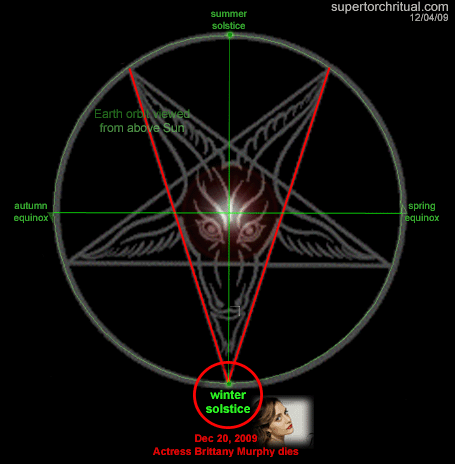
'Vs' of course come in peace...


...through a Pentagonal Stargate

...and an earthquake.

'Knee' = Rome in leg-shaped Italy...

'Ring' = Pacific (= 'peace') Ring of Fire...
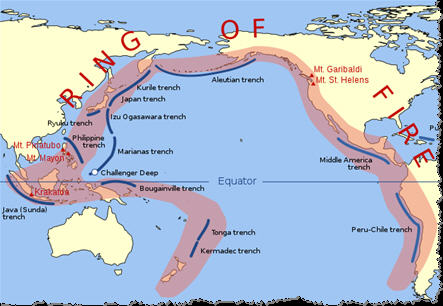
Chile is in the Ring of Peace/'V'...
And 'V' is balloons...

...reenacted right before the 'V' premiere (Nov 3, 2009)
via Balloon Boy on Oct 15...


...which was orbitally 'stereo aligned' with Feb 25-26,
or the Chile 'Big One' (Feb 27).

Contact via earthquakes = Contact with V = Contact with Peace = Contact with Love (Rome, Venus) = Contact via Pentagram
All in the 'Big One' space-time geometric overlay...

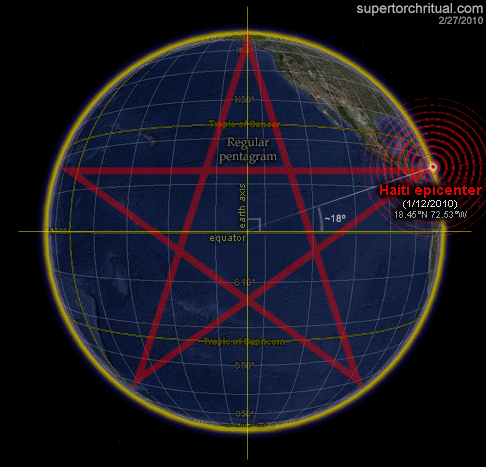

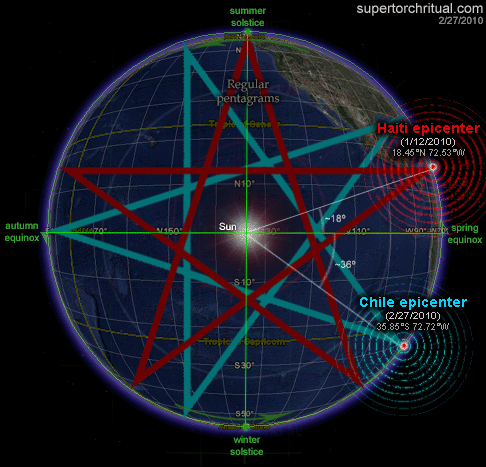

And that's how Contact is being made in 2010.
Just the tip of the iceberg.
* * *
NOTE: For those new here, please note that this strange thing that I do on this website is not the typical hindsight-driven dot connecting stuff that you may have seen out there. Here, much emphasis is placed on foresight. I regularly make predictions or multicontextual pattern projections to demonstrate that it is something very real - albeit 'impossible' according to the current paradigm - that I discuss and try to show again and again. So, for instance, even though I decided not to bring it up in the main text of the article purely for readabililty, both the April 2009 Italian earthquake and the January 2010 Haiti 'Big One' were, to a considerable degree, projected beforehand. (See here & here - the latter not including STRUG entries thus appearing less impressive than what was actually going on 'underground' projection-wise.) Even the latest Chile mega-quake was no surprise around here (especially on STRUG) - evidenced by the fact that I was able to quickly write up and post this article within 24 hours of the catastrophe. For many months, in fact, I kept highlighting the Vancouver Olympics (Feb 12-28) and its general timeframe, based on various patterns, in particular the following golden/phi-based timecode which had 'Big One' (mega-quake) written all over it.
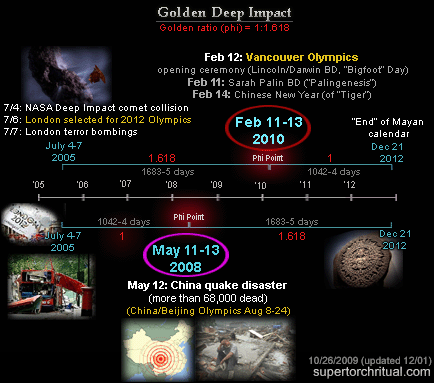
Not surprisingly, there was to be further twists which I was able to closely follow, leading me to make a necessary adjustment just in time for (i.e. before) the early-January quakes including Haiti. (I haven't yet fully explained what caused me to make the adjustment but that it was a valid move is obviously not in question.) After Haiti, the status of the February 2010 window became uncertain - was it still radioactive or had it released all its energy in January? We now know the answer: Another small time shift, another 'Big One' (this time in Chile), coming the day before the closing ceremony of the 'V Olympics' instead of the opening ceremony. And it was decidedly pentagonal in nature. This is important because in addition to what's already been discussed the pentagram is nearly synonymous with (i.e. found encoded in its geometry) the golden ratio, i.e. '1 : 1.618', therefore linking back to the phi-based timecode above.

* * *
To be continued...
https://www.goroadachi.com/etemenanki/contact-penta-quakes.htm
|
|
|
 Premier Premier
 Précédent
143 a 157 de 157
Suivant Précédent
143 a 157 de 157
Suivant
 Dernier
Dernier

|

